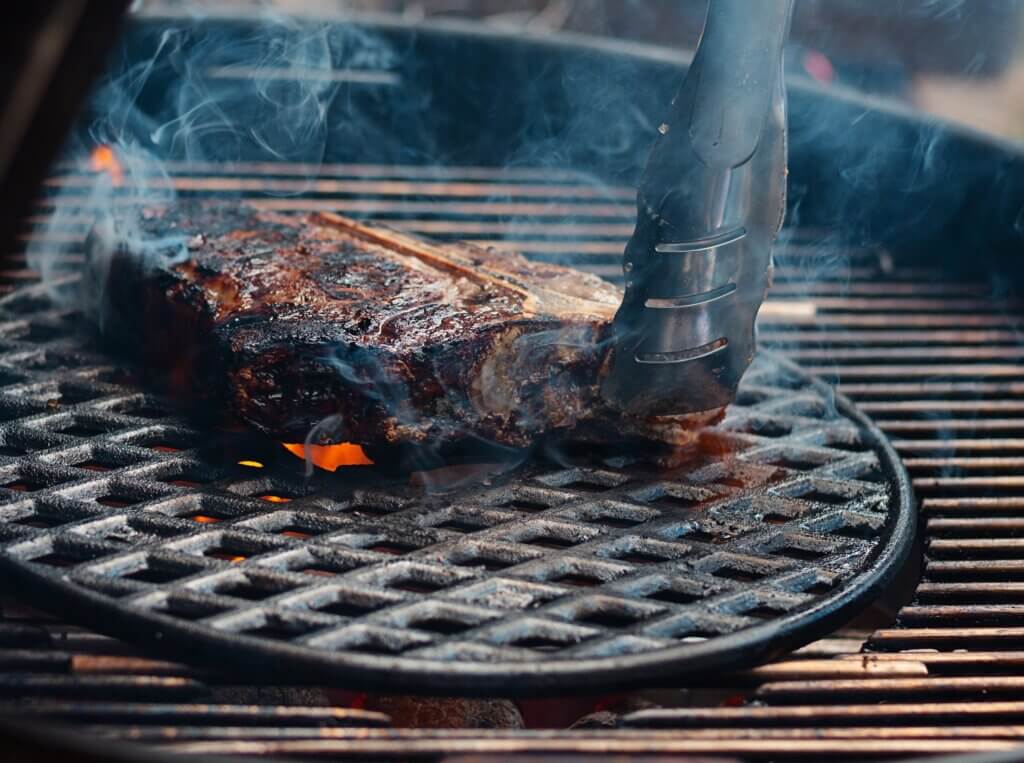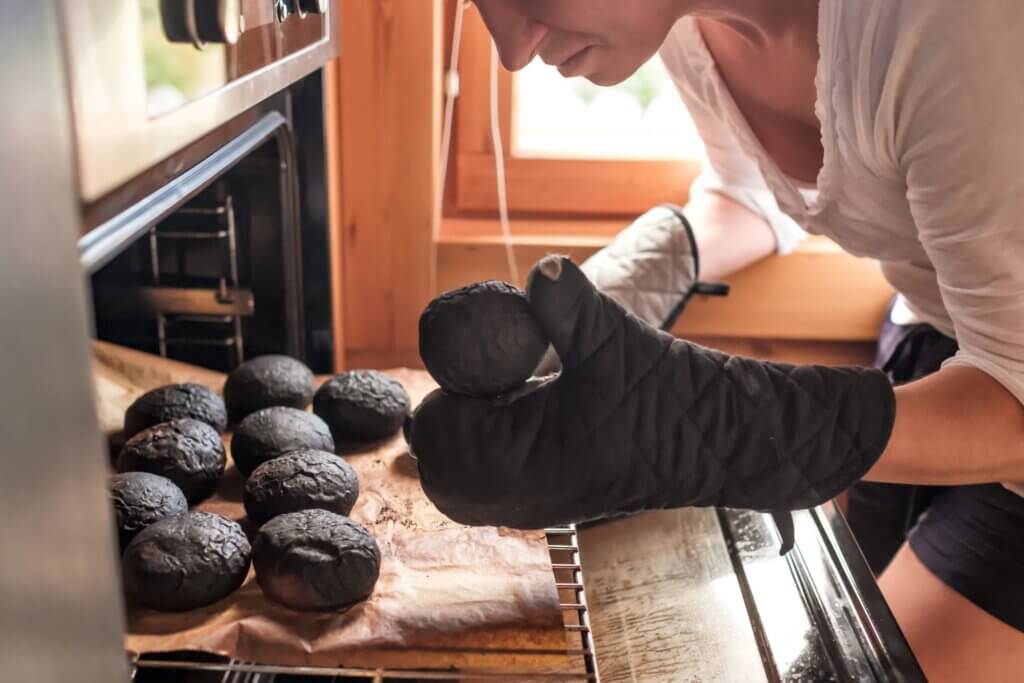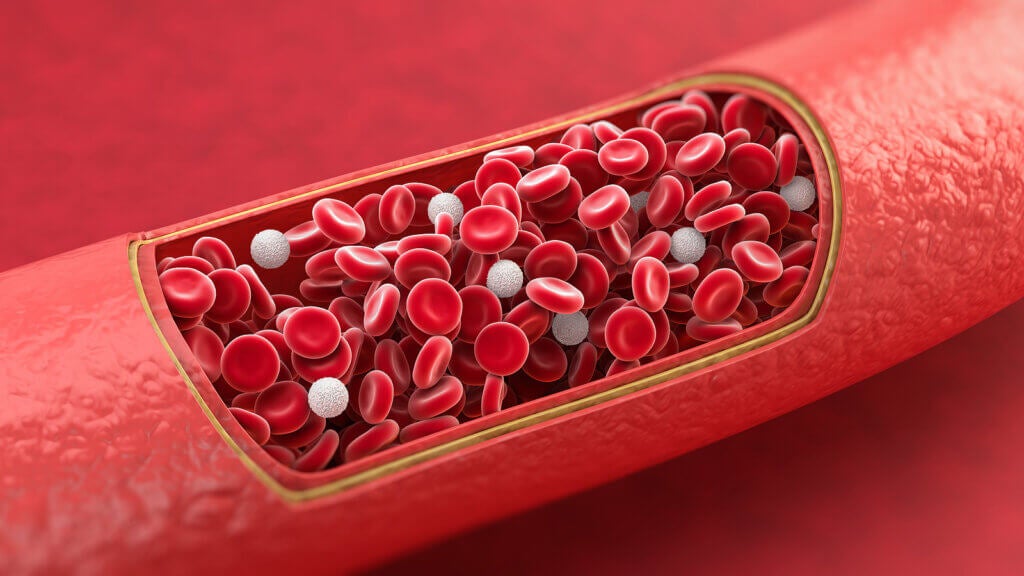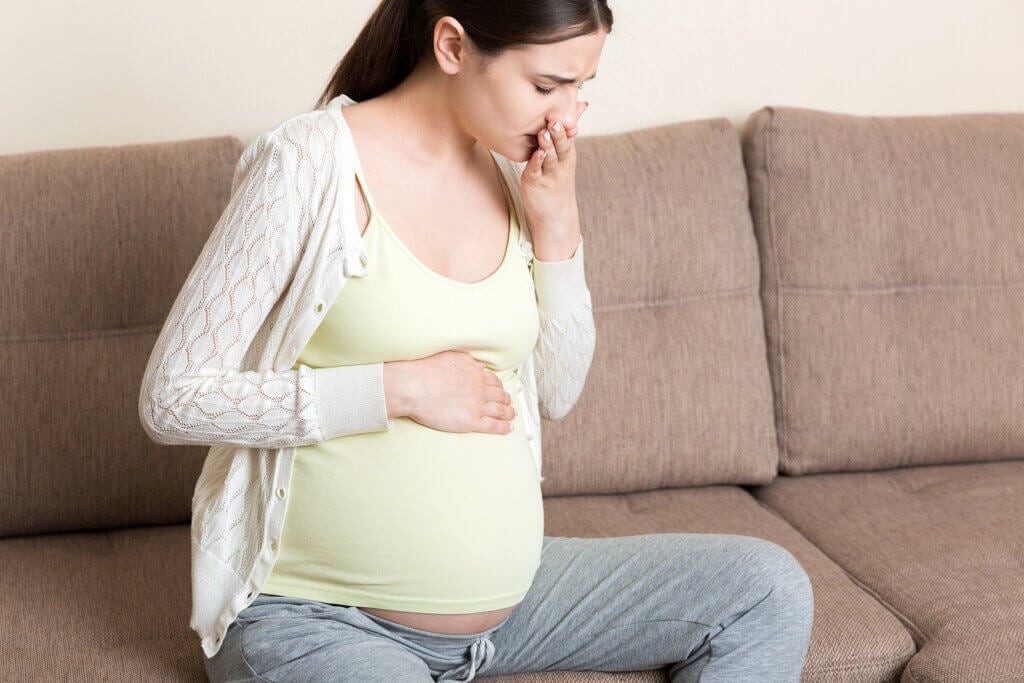Why You Shouldn't Eat Burnt Food


Escrito y verificado por el nutricionista Saúl Sánchez
Burnt food is bad for your health. It has a series of toxic compounds inside that could increase inflammation levels and cause damage to cellular DNA. For this reason, its consumption should be avoided. In the event that food burns, it’s best to discard it.
Before beginning, it’s essential to emphasize that a healthy diet is one that’s varied and balanced from an energy point of view. It manages to satisfy the minimum amount of essential nutrients the body needs to ensure that it performs all its functions optimally.
Burnt food, a source of toxins
The first thing to note is that burnt food contains a series of toxic compounds called polycyclic aromatic hydrocarbons. These elements could increase the risk of developing certain complex diseases, such as some types of cancer. This is evidenced by research published in the journal Reviews on Environmental Health.
These elements can also be found in some refined or reused oils, as well as in packaged food. However, when a dish burns during its preparation, their concentration increases a great deal, making it really dangerous. These substances increase inflammatory processes and cause cell damage from oxidation.
As if this weren’t enough, if the preparation in question is a source of carbohydrates, when burned, the proportion of acrylamide will increase. This compound is formed from the subjection of these nutrients to high temperatures.
This is a product that could also trigger the incidence of some types of cancer associated with the digestive tract, as stated in a study published in Physiological Research.
At the end of the day, it must be taken into account that food cooking processes manage to improve the hygienic quality of the same. But everything has a limit. It’s not good to subject them to high temperatures or let them burn. There’ll be no pathogens inside under these circumstances, but the result could be worse in the medium or long term.
In addition, burnt food doesn’t have good organoleptic characteristics, another of the fundamental reasons to avoid its consumption. If a small portion of the food burns, simply discard that part. Now, if this process has occurred on the entire product in general, then it’s best to throw the burnt food away and start over.
Burnt foods and trans fatty acids
Fatty acids are essential nutrients to ensure the proper functioning of the human body. However, those that exert a positive effect are those of the cis type. These are naturally present in many different fresh foods, giving the products good palatability and nutritional quality.
However, when we subject these foods to high temperatures or certain physicochemical processes, the lipids they host inside can be transformed. In these cases, trans fats are formed, elements that are harmful to the body and that have been shown to increase the risk of getting sick. They can promote obesity, diabetes, various types of cancer, and cardiovascular disease.
They normally act via inflammation. That is, they manage to increase the inflammatory mechanisms in the internal environment, thus producing deregulations in cell signaling and accumulation of waste metabolites in the tissues. The result is inefficiency at the physiological level, which can lead to problems in the proper functioning of the organs.
Despite their danger, trans-fatty acids aren’t just found in burnt foods but also in many other products for regular consumption, such as sweets, pastries, certain baked goods, and other ultra-processed industrial products. In addition, their presence isn’t reflected on the labels, which is even more dangerous for the consumer.
Not all lipids have the same facility to transform into trans with the application of heat. For example, extra virgin olive oil adequately resists high temperatures, with a smoke point of around 350 degrees Fahrenheit. Even so, when food is burned, this amount of heat is usually exceeded, so the genesis of trans fats is almost assured.
Nitrosamines, another great danger

Another of the compounds present in burnt food that can pose a health risk are nitrosamines or nitrites. There’s evidence that these substances are related to a higher incidence of various types of cancer, especially of the digestive tract. Their presence in the diet should be avoided as much as possible.
Importantly, nitrites are used in the context of the food industry to extend the shelf life of many foods, as they act as preservatives. However, although, as such, they’re already harmful to the body, when these foods are cooked and burned, the dangers are greater. The teratogenic capacity of said compounds will increase, causing alterations in cell replication.
To reduce these risks, it’s best to prioritize the consumption of fresh foods over that of industrially processed foods. Normally, fresh foods don’t contain these elements unless they’re burned during cooking. At most, compounds known as nitrates can be found inside. However, these aren’t harmful to the body. In fact, the opposite is true.
According to research published in the Critical Reviews in Food Science and Nutrition magazine, nitrates manage to exert a vasodilator effect, reducing blood pressure. Thanks to this mechanism, cardiovascular risk could be reduced in some patients, considering this parameter as a risk factor. Even athletes could see increased performance from its consumption.
To avoid risks, before acquiring any processed product, it’s important to observe the labeling to detect the presence of nitrites or sulfites inside. In the event that it contains them, you’ll need to limit their presence in the diet on a regular basis. But it’ll be even more dangerous if these foods in question are cooked and burned. It’s best to throw them away.
The optimum temperature for cooking

Eating burnt food is dangerous to health. However, without burning, cooking many types of foods at high temperatures could alter their nutritional quality. It’s important to avoid such modifications to ensure the healthiness of the diet and to avoid harmful impacts on the body.
In general terms, it’s important to avoid subjecting food to a temperature higher than 335 degrees Fahrenheit. When higher temperatures are reached, most of the fatty acids are easily transformed into the trans type. In addition, other harmful compounds can be generated, such as the ones we’ve been discussing. Therefore, it’s best to opt for less aggressive cooking alternatives.
It’s true that roasting products can improve their organoleptic characteristics. Even so, there’s a substantial difference between toasting and burning. In the first case, the well-known Maillard reaction occurs, from which the carbohydrates caramelize and give a crunchy touch that can be positive.
In any case, when the color of the food changes from brown to black, it means that the food has been overcooked, so it’s better not to eat it. This is a good indicator to know when the products are burned, denoting the presence of elements that alter the inflammatory and oxidative mechanisms in the internal environment.
It should be noted that both oxidation and inflammation have been shown to be underlying processes in the development of many complex diseases. You should keep them under control. For this, vegetables and fatty acids of the omega-3 series, present in oily fish, must be included in the diet.
It’s important to combine raw and cooked foods
Although cooking is an excellent tool to improve the healthiness, organoleptic characteristics, and even the digestibility of many foods, space must also be left in the diet for raw products. These not only lack all the toxins that we’ve mentioned so far, but they could also contain a greater concentration of nutrients.
Thermal processes on many occasions are capable of degrading certain vitamins, minerals, and antioxidants, conditioning their absorption and the functions that they’ll carry out in the body later. Likewise, it’s best to combine different cooking methods in the diet to avoid nutritional losses and satisfy all daily requirements.
After all, one of the principles of a healthy diet is variety. We’re not only referring to the spectrum of foods included in the guideline, but also to the preparation methods applied and used. This will achieve the optimal functioning of the body, which will help prevent the development of chronic and complex diseases over the years.
Don’t eat burnt food
Eating burnt food is especially harmful to health. Inside it can be found compounds such as acrylamide, polycyclic aromatic hydrocarbons, nitrosamines, and another series of elements that could promote inflammatory and oxidative mechanisms in the internal environment. Therefore, the risk of developing chronic diseases increases over the years.
Likewise, to maintain a good state of health, it’s important to establish a series of good habits together. It’s not enough just to take care of your diet. It’s important to also carry out physical exercise on a regular basis, promoting muscular strength above all. Adequate sleep every night will also be key. At least 7 or 8 hours of good quality rest will be necessary.
Burnt food is bad for your health. It has a series of toxic compounds inside that could increase inflammation levels and cause damage to cellular DNA. For this reason, its consumption should be avoided. In the event that food burns, it’s best to discard it.
Before beginning, it’s essential to emphasize that a healthy diet is one that’s varied and balanced from an energy point of view. It manages to satisfy the minimum amount of essential nutrients the body needs to ensure that it performs all its functions optimally.
Burnt food, a source of toxins
The first thing to note is that burnt food contains a series of toxic compounds called polycyclic aromatic hydrocarbons. These elements could increase the risk of developing certain complex diseases, such as some types of cancer. This is evidenced by research published in the journal Reviews on Environmental Health.
These elements can also be found in some refined or reused oils, as well as in packaged food. However, when a dish burns during its preparation, their concentration increases a great deal, making it really dangerous. These substances increase inflammatory processes and cause cell damage from oxidation.
As if this weren’t enough, if the preparation in question is a source of carbohydrates, when burned, the proportion of acrylamide will increase. This compound is formed from the subjection of these nutrients to high temperatures.
This is a product that could also trigger the incidence of some types of cancer associated with the digestive tract, as stated in a study published in Physiological Research.
At the end of the day, it must be taken into account that food cooking processes manage to improve the hygienic quality of the same. But everything has a limit. It’s not good to subject them to high temperatures or let them burn. There’ll be no pathogens inside under these circumstances, but the result could be worse in the medium or long term.
In addition, burnt food doesn’t have good organoleptic characteristics, another of the fundamental reasons to avoid its consumption. If a small portion of the food burns, simply discard that part. Now, if this process has occurred on the entire product in general, then it’s best to throw the burnt food away and start over.
Burnt foods and trans fatty acids
Fatty acids are essential nutrients to ensure the proper functioning of the human body. However, those that exert a positive effect are those of the cis type. These are naturally present in many different fresh foods, giving the products good palatability and nutritional quality.
However, when we subject these foods to high temperatures or certain physicochemical processes, the lipids they host inside can be transformed. In these cases, trans fats are formed, elements that are harmful to the body and that have been shown to increase the risk of getting sick. They can promote obesity, diabetes, various types of cancer, and cardiovascular disease.
They normally act via inflammation. That is, they manage to increase the inflammatory mechanisms in the internal environment, thus producing deregulations in cell signaling and accumulation of waste metabolites in the tissues. The result is inefficiency at the physiological level, which can lead to problems in the proper functioning of the organs.
Despite their danger, trans-fatty acids aren’t just found in burnt foods but also in many other products for regular consumption, such as sweets, pastries, certain baked goods, and other ultra-processed industrial products. In addition, their presence isn’t reflected on the labels, which is even more dangerous for the consumer.
Not all lipids have the same facility to transform into trans with the application of heat. For example, extra virgin olive oil adequately resists high temperatures, with a smoke point of around 350 degrees Fahrenheit. Even so, when food is burned, this amount of heat is usually exceeded, so the genesis of trans fats is almost assured.
Nitrosamines, another great danger

Another of the compounds present in burnt food that can pose a health risk are nitrosamines or nitrites. There’s evidence that these substances are related to a higher incidence of various types of cancer, especially of the digestive tract. Their presence in the diet should be avoided as much as possible.
Importantly, nitrites are used in the context of the food industry to extend the shelf life of many foods, as they act as preservatives. However, although, as such, they’re already harmful to the body, when these foods are cooked and burned, the dangers are greater. The teratogenic capacity of said compounds will increase, causing alterations in cell replication.
To reduce these risks, it’s best to prioritize the consumption of fresh foods over that of industrially processed foods. Normally, fresh foods don’t contain these elements unless they’re burned during cooking. At most, compounds known as nitrates can be found inside. However, these aren’t harmful to the body. In fact, the opposite is true.
According to research published in the Critical Reviews in Food Science and Nutrition magazine, nitrates manage to exert a vasodilator effect, reducing blood pressure. Thanks to this mechanism, cardiovascular risk could be reduced in some patients, considering this parameter as a risk factor. Even athletes could see increased performance from its consumption.
To avoid risks, before acquiring any processed product, it’s important to observe the labeling to detect the presence of nitrites or sulfites inside. In the event that it contains them, you’ll need to limit their presence in the diet on a regular basis. But it’ll be even more dangerous if these foods in question are cooked and burned. It’s best to throw them away.
The optimum temperature for cooking

Eating burnt food is dangerous to health. However, without burning, cooking many types of foods at high temperatures could alter their nutritional quality. It’s important to avoid such modifications to ensure the healthiness of the diet and to avoid harmful impacts on the body.
In general terms, it’s important to avoid subjecting food to a temperature higher than 335 degrees Fahrenheit. When higher temperatures are reached, most of the fatty acids are easily transformed into the trans type. In addition, other harmful compounds can be generated, such as the ones we’ve been discussing. Therefore, it’s best to opt for less aggressive cooking alternatives.
It’s true that roasting products can improve their organoleptic characteristics. Even so, there’s a substantial difference between toasting and burning. In the first case, the well-known Maillard reaction occurs, from which the carbohydrates caramelize and give a crunchy touch that can be positive.
In any case, when the color of the food changes from brown to black, it means that the food has been overcooked, so it’s better not to eat it. This is a good indicator to know when the products are burned, denoting the presence of elements that alter the inflammatory and oxidative mechanisms in the internal environment.
It should be noted that both oxidation and inflammation have been shown to be underlying processes in the development of many complex diseases. You should keep them under control. For this, vegetables and fatty acids of the omega-3 series, present in oily fish, must be included in the diet.
It’s important to combine raw and cooked foods
Although cooking is an excellent tool to improve the healthiness, organoleptic characteristics, and even the digestibility of many foods, space must also be left in the diet for raw products. These not only lack all the toxins that we’ve mentioned so far, but they could also contain a greater concentration of nutrients.
Thermal processes on many occasions are capable of degrading certain vitamins, minerals, and antioxidants, conditioning their absorption and the functions that they’ll carry out in the body later. Likewise, it’s best to combine different cooking methods in the diet to avoid nutritional losses and satisfy all daily requirements.
After all, one of the principles of a healthy diet is variety. We’re not only referring to the spectrum of foods included in the guideline, but also to the preparation methods applied and used. This will achieve the optimal functioning of the body, which will help prevent the development of chronic and complex diseases over the years.
Don’t eat burnt food
Eating burnt food is especially harmful to health. Inside it can be found compounds such as acrylamide, polycyclic aromatic hydrocarbons, nitrosamines, and another series of elements that could promote inflammatory and oxidative mechanisms in the internal environment. Therefore, the risk of developing chronic diseases increases over the years.
Likewise, to maintain a good state of health, it’s important to establish a series of good habits together. It’s not enough just to take care of your diet. It’s important to also carry out physical exercise on a regular basis, promoting muscular strength above all. Adequate sleep every night will also be key. At least 7 or 8 hours of good quality rest will be necessary.
- Rezaei Kalantary, R., Jaafarzadeh, N., Rezvani Ghalhari, M., & Hesami Arani, M. (2021). Cancer risk assessment of polycyclic aromatic hydrocarbons in the soil and sediments of Iran: a systematic review study. Reviews on environmental health, 10.1515/reveh-2021-0080. Advance online publication. https://doi.org/10.1515/reveh-2021-0080.
- Semla, M., Goc, Z., Martiniaková, M., Omelka, R., & Formicki, G. (2017). Acrylamide: a common food toxin related to physiological functions and health. Physiological research, 66(2), 205–217. https://doi.org/10.33549/physiolres.933381.
- Islam, M. A., Amin, M. N., Siddiqui, S. A., Hossain, M. P., Sultana, F., & Kabir, M. R. (2019). Trans fatty acids and lipid profile: A serious risk factor to cardiovascular disease, cancer and diabetes. Diabetes & metabolic syndrome, 13(2), 1643–1647. https://doi.org/10.1016/j.dsx.2019.03.033.
- Karwowska, M., & Kononiuk, A. (2020). Nitrates/Nitrites in Food-Risk for Nitrosative Stress and Benefits. Antioxidants (Basel, Switzerland), 9(3), 241. https://doi.org/10.3390/antiox9030241.
- Zamani, H., de Joode, M., Hossein, I. J., Henckens, N., Guggeis, M. A., Berends, J. E., de Kok, T., & van Breda, S. (2021). The benefits and risks of beetroot juice consumption: a systematic review. Critical reviews in food science and nutrition, 61(5), 788–804. https://doi.org/10.1080/10408398.2020.1746629.
- Soysal, P., Arik, F., Smith, L., Jackson, S. E., & Isik, A. T. (2020). Inflammation, Frailty and Cardiovascular Disease. Advances in experimental medicine and biology, 1216, 55–64. https://doi.org/10.1007/978-3-030-33330-0_7.
Este texto se ofrece únicamente con propósitos informativos y no reemplaza la consulta con un profesional. Ante dudas, consulta a tu especialista.







